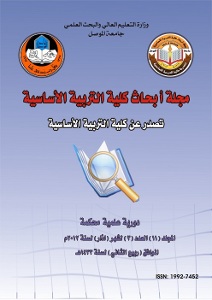The Use of Simplification as a Teaching Strategy atUniversity Level: A Comparative Study
Abstract
. . . . . .In their attempt to drive foreign language teaching skills home and make the teaching materials more memorable on the part of learners, instructors everywhere resort, whether consciously or unconsciously, to the use of a variety of simplification techniques. Simplification is a strategy adopted by instructors in foreign language teaching so as to reduce the new language to a small set of general properties to cope with the learner's preference of reduced linguistic means for the sake of better assimilation of the teaching material, avoidance of errors, and increasing fluency. It is used as an effective teaching strategy almost every time and everywhere. The present paper aims at pinpointing the variation in the use of simplification, via a number of closely related techniques, by two samples of instructors specialized in teaching linguistics and literature at university level. As such, it is hypothesized that there are no significant differences between the two samples of instructors in their use of different simplification techniques in their teaching of the subjects of their specialization at university level. Yet, the outcomes of the practical part of the research show the availability of such a difference. Accordingly, the hypothesis concerning this aspect of the topic under investigation is rejected. The research further hypothesizes that each sample of instructors resorts to those simplification techniques that better fit the model of instruction followed in the teaching of the subjects of specialization, whether linguistics or literature. In this respect, the outcomes of the field work comply with the the relevant hypothsis, which is duly accepted. The research paper ends with some concluding remarks and pedagogical implications.
